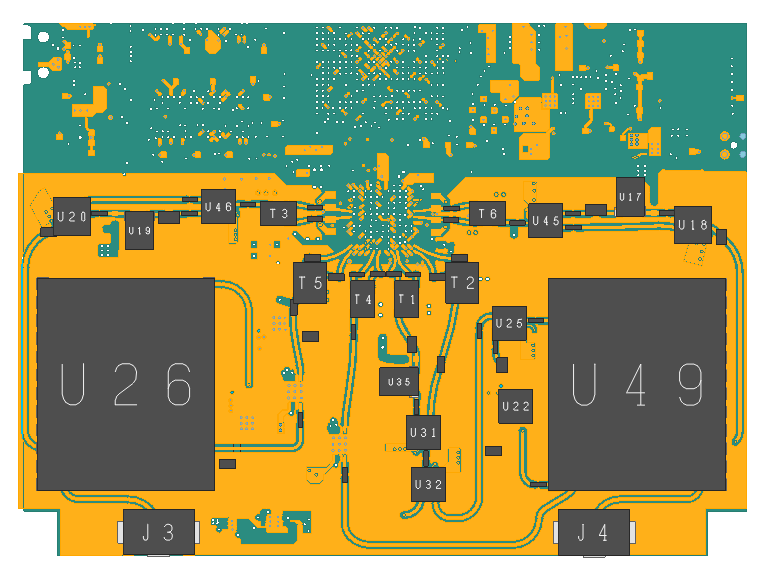ADS Momentum is a full-wave EM field solver that merged with ADS package for more than 10 years. Starting with the ADS 2016.1, two new tools introduced by Keysight, the SI and PI Pro environment that can be accessed through layout interface inside the ADS software. In this post, I’ll talk about features of these two new tools and the reasons behind why they become an essential tool in the first place.
Momentum is a 3D EM solver. Have both RF and microwave options available. RF Mode solve EM fields in a simplified environment by utilizing approximated formulas while Microwave Mode use the full-blown Maxwell equations to solve the fields. Aside from accurate results that Momentum provide, this tools is memory and cpu-time hungry. If you try to simulate a simple two layer 6cmx6cm PCB with this tool, the process may take a day with consuming up to 80GB of memory to be solve. This is not a unexpected situation, because solving a board inside Momentum, make this tool to mesh all via, traces and planes in a full 3D environment. Momentum then solve the EM in a 3D box and calculate cross talk between all traces across the board even if they are completely isolated from each other.
In these cases if you don’t access to a superior machine, you will have to cutting out your design and simplify it as far as you could. This process is tedious and may take you further from achieving accurate results. This problem originated from not simplifying the design in a smart way and ignore the fact that we are surly simulating a PCB with focus on coupling and signal integrity. Thus far-field calculation is absolutely trivial.
To solve the discussed issue, Keysight developed a new EM solver engine that consider PCB requirement in mind. SI/PI Pro accelerate the simulating process 10 times by exploiting the special conditions that applied to PCB designs and RF boards that simplify the design. Although this simplification will results in less accurate simulation, it is a complete automated process with zero overhead and the boost in the simulation time is much greater than manual simplification that you can do in the Momentum.

Fig 1. PNA6 pcb imported to ADS SI Pro
To evaluate the solvers, I imported PNA6 design into both Momentum and SI Pro environment. Then in momentum in order to cutback the cpu-time, I had to remove non-related layers, remove GND plane coppers and replace the layer with a slot plane, then optimize the Physical Model tab inside the EMPro options and finally remove superfluous traces from the layout. Carring out these preparation steps takes me almost 30 to 45 minutes which is quite long if you had to change the layout in Allegro and redo the whole process.
The simulation performed on 100MHz to 6GHz on a 4 layer RO4003 substrate. both Momentum RF and Momentum Microwave results in a same S-Parameter with slightly negligible differences in high frequency portion. The SI Pro results also compromises with Momentum although it shows some difficulty in achieving accurate S-Param the results are in complete compliance with momentum results and simulation process is so much faster than Momentum.
To conclude this discussion SI Pro shows a good fidelity toward achieving good results and as long as you can neglect 1 or 2dB errors the reults could be enough for you. Si Pro neither care for far field calculation nor can be used to simulate Antenna design but as far as your designs are limited to PCB or chip layout, SI Pro can serve as a nice companion toward reaching your goals in the product development process.
1. YouTube – Passive Circuit DesignGuide with a Momentum Simulation
2. YouTube – SIPro Introduction